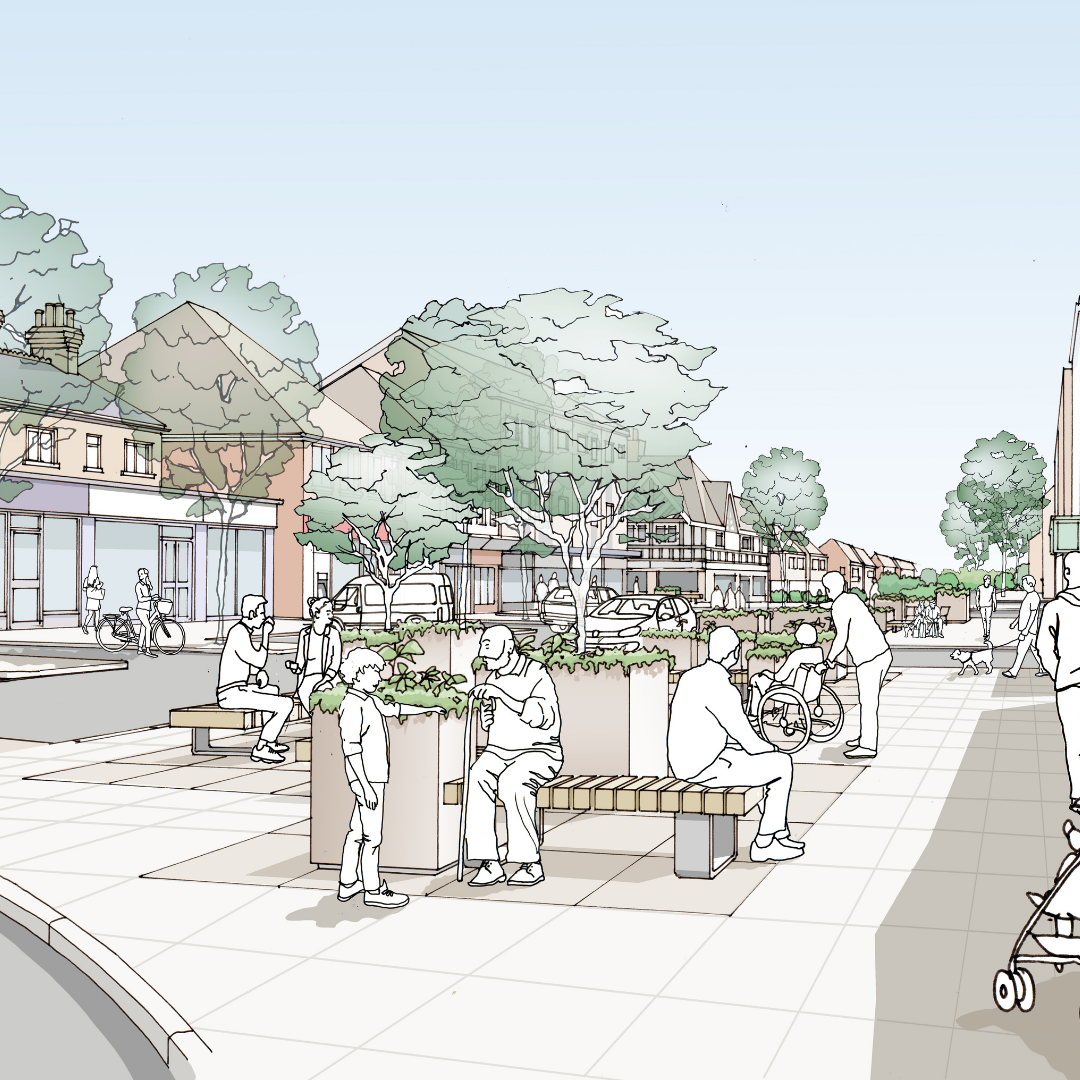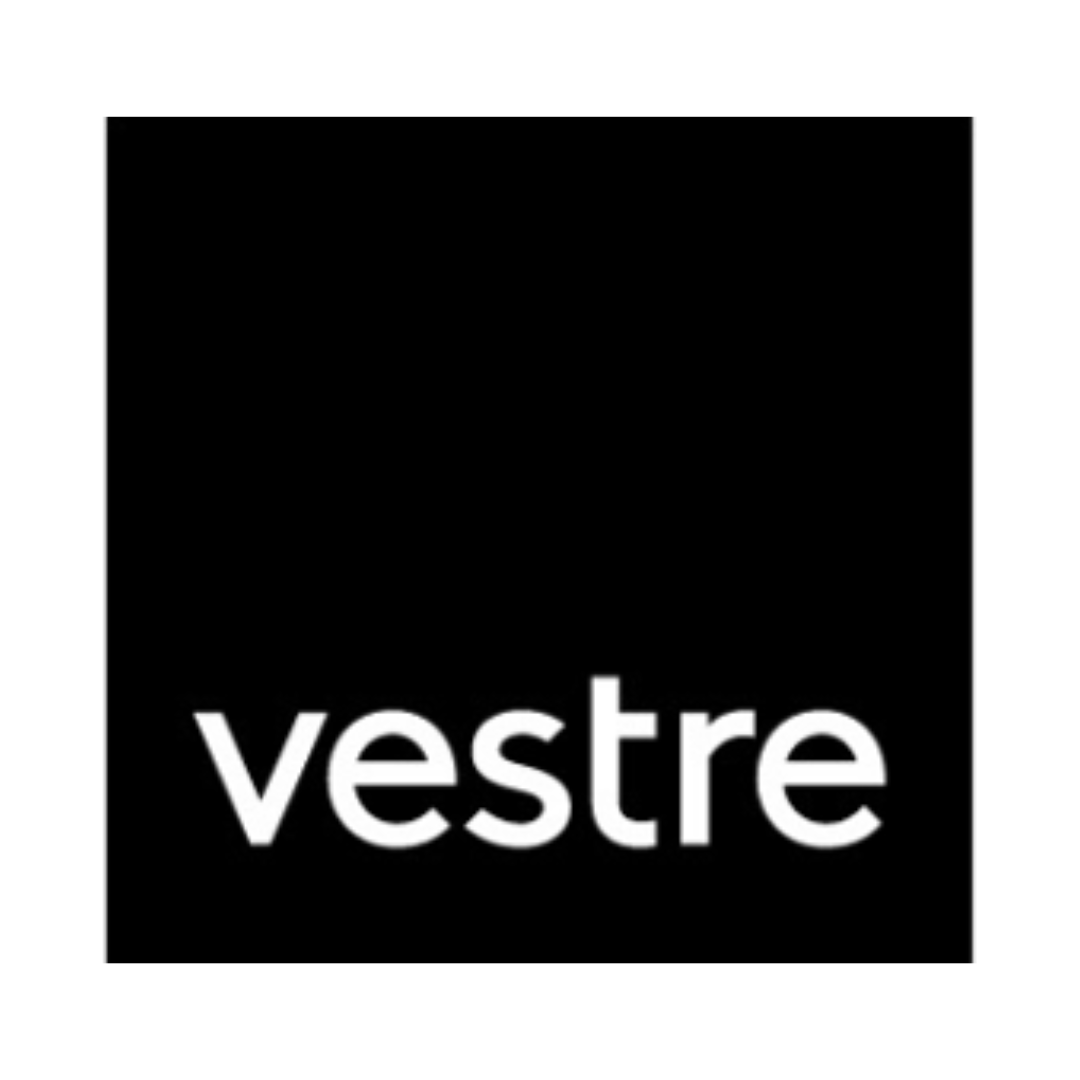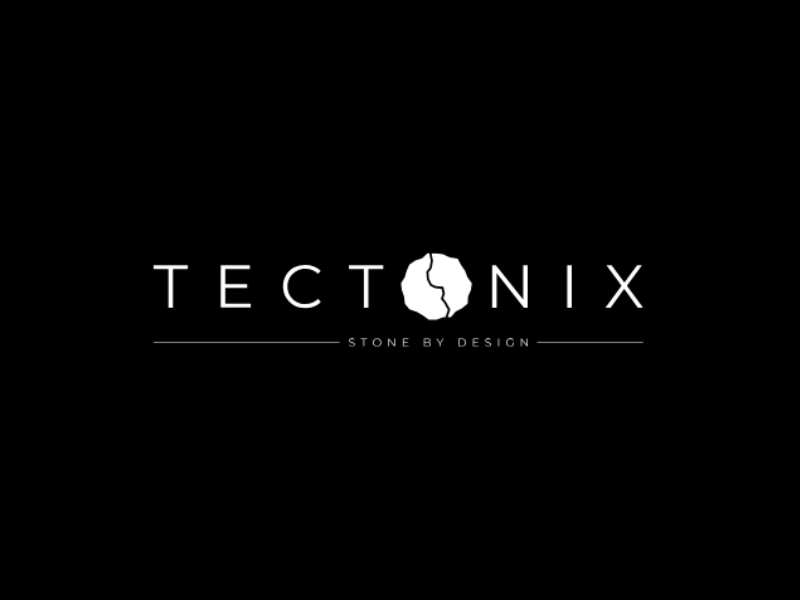Project showcase
Reimagining the centre of Balsall Common, Coventry – Berkswell and Balsall Parish Councils and Solihull Metropolitan Borough Council with URBAN Silence and Arup

Balsall Common is a well-loved place to live but has few attractions. Inspired by the 15-minute neighbourhood concept, this proposal is to reinvent Balsall Common as a place not only to shop, but as a place of encounter, community activity, social interaction, business and living.
Where is the project located?
Station Road, Balsall Common CV7 7FE
Who is the developer/client of the project?
Berkswell and Balsall Parish Councils, with the support of Solihull Metropolitan Borough Council
Describe the context of this project, its neighbourhood and people?
Balsall Common is the largest village of the rural Parishes of Balsall and Berkswell. It is perfectly placed to access employment and services across the dynamic hinterland of Coventry and Birmingham. The village has retained the peacefulness and comfort of being “simply” a nice place to live. The centre, however, is a disappointment for many residents: it includes a range of convenience outlets, but it lacks character and sense of quality. It serves the community’s needs, but it does not generate pride or emotional attachment. For most, it is frustratingly car dominated, inadequate for the safety of children and for people with impairments. For businesses, however, it works as it is: trade is good, because of the affluent growing population and established routine custom.The village centre, at the crossroads of the two most trafficked streets, was developed in the 1960s as a functional convenience centre designed to support residential growth in the local area. It has no obvious development opportunities, but recent history has shown that it has the capacity of regenerating itself through progressive redevelopment.
Capturing the potential of a 15-minutes neighbourhood concept, the proposal is to reinvent the centre as a place not only of shopping, but also as a place of encounter, community activity, social interaction, business and living capable, in time, of attracting better architecture and enhanced self-regeneration.
Please describe your approach to this future place and its mix of uses. How will it function as a vibrant place? How does it knit into, and serve the needs of, the wider area?
Balsall Common is representative of many similar settlements in the UK: it is a well-loved place to live but has no major attractions. It has a committed community, many local organisations, and two active Parish Councils, with great ambitions and limited resources – fully managed by volunteering staff and unpaid councillors. There is no development opportunity in the centre capable of financing major change.The village, however, will be growing very significantly and the centre risks becoming obsolete or completely overrun by traffic and parking.
ARUP (lead consultant) teamed up with URBAN Silence (a small masterplanning consultancy which prides itself with personalised services) to work from the bottom-up with the community to reinvent the centre, creating opportunities for local people and encouraging local organisations to use the centre more intensely, while improving local character and retaining the strengths of existing trade.
This was achieved through intense and nearly continuous dialogue through focus groups, engagement with young people, one-to-one meetings with a range of vulnerable individuals and direct contact with most local businesses. We encouraged the formation of ‘local interest groups’, run by local people and feeding directly into the framework of the study: for heritage, cycling, community events and for the exploration of specific local bugbear issues.
The team became the drawing hand and the technical translators of the ideas and aspirations of the community: we acted as the “facilitators, to help the community who loves the place and knows it best” (Andrew Burrow, Working Group leader, July 2021).
What is the environmental impact of the project? How will the carbon use and material impact of the development be mitigated? What is the sustainability strategy?
The project had a small budget which did not allow a full assessment of environmental and climate issues. However, we carried out a qualitative multi-criteria assessment of carbon emissions, taking account of the UK’s plans for decarbonisation (the Ten Point Plan, the Decarbonising Transport Plan, the Net-Zero Strategy published in 2021), Net-Zero Solihull and Local Plan policies:• Supporting efforts to reduce car use by a significant reduction of car presence in the centre and welcoming measures for walking and cycling.
• Encouraging wider walking and cycling connections across the village (looking beyond the study boundaries).
• Supporting the local economy and reducing the need to travel for services.
• Encouragement to provide renewable energy at least as part of public and community buildings.
• Reprovision of removed planting and introduction of trees and biodiversity-rich plant mixes.
• Use of low carbon materials in construction (detailed design stage).
Suggestions to adapt to future erratic weather conditions were based on broad principles derived by the UN Race to Resilience.
• Introduction of trees and planters contributing to slow water run-off and increased biodiversity.
• Encouragement of urban greenery (green walls, roofs, plant and bird boxes) to be included in private properties.
• Increased shading and reduction of urban heat.
• Increased proportion of permeable surfaces.
• Increased social resilience through additional opportunities for social interaction and participation into community activities.
The chart show that the proposals are well balanced
and make a significant contribution to the climate agenda.
Describe the social impact of the project: How will this future place contribute to the economic, environmental and social wellbeing of its citizens?
Similarly, the project budget did not allow a quantitative assessment of Social Value benefits, and a qualitative assessment was made instead taking in consideration SMBC Social Value Policy:• Supporting the future prosperity of local businesses, by enhancing the centre and increasing its attractiveness as a destination as well as convenience shopping.
• Increasing the cohesion of the business environment, by providing a unified high-quality setting a wider are, effectively expanding what is considered to be the ‘centre’ of the village.
• Supporting the future prosperity of citizens and social cohesion, by strengthening the image and identity of the centre, increasing opportunities for socialising in the public space and providing the setting for community events.
• Value and respect the needs and aspirations of all people, by creating an easier and safer environment for women, children and disabled people.
• Contributing to the delivery of a lower carbon future (see climate change section).
• Managing the demand for public services, by encouraging healthier lifestyles through walking and cycling, additional opportunities to meet people (reduced isolation) and improved local air quality.
• Making the best use of local people and assets by supporting local independent shops (retaining local spend) and facilitating access to community facilities, strengthening connections between the centre, village heritage and village activities.
• In future: ensure that the procurement practices associated with implementation encourage local participation and, if possible, supply.
Festival of Pineapples
24-26 February 2026
Pineapples prize giving night
April
Pineapples at Festival of Place
10 June 2026
© The Pineapples - Tweak Ltd. 124 City Road, London, EC1V 2NX. Tel: 020 3326 7238



